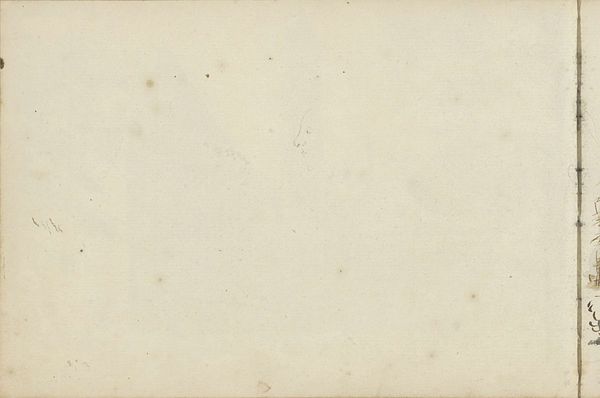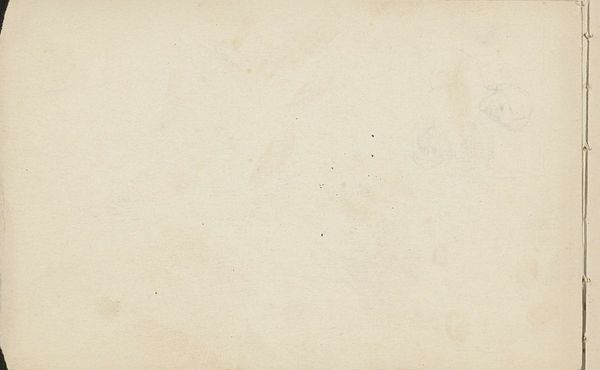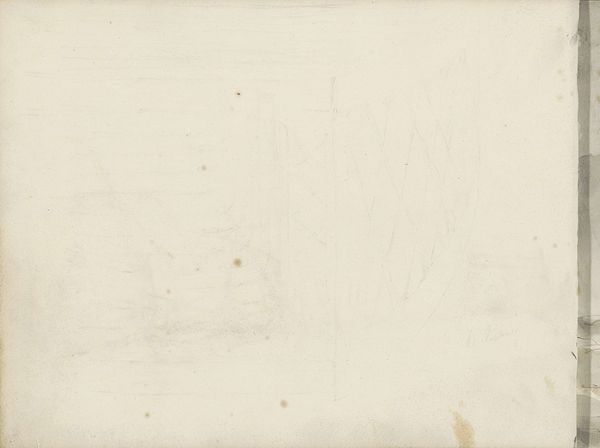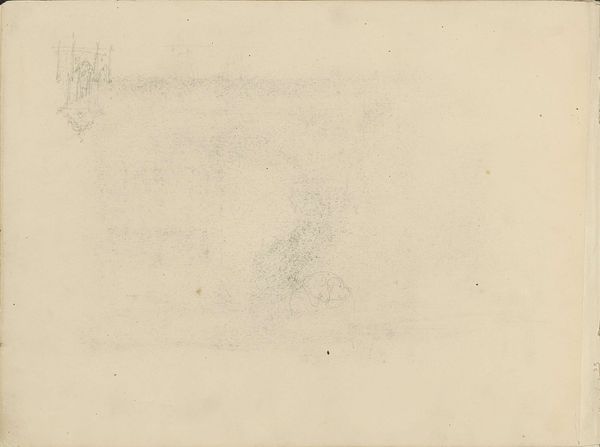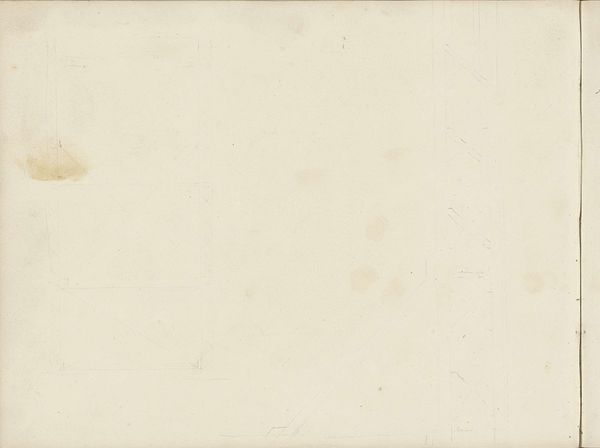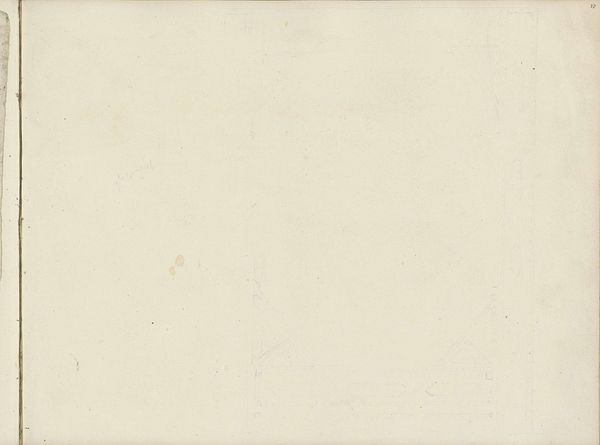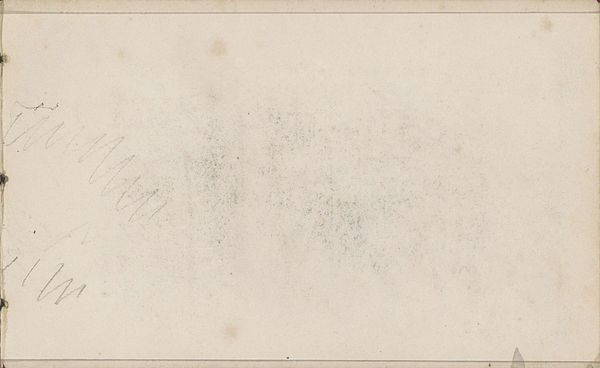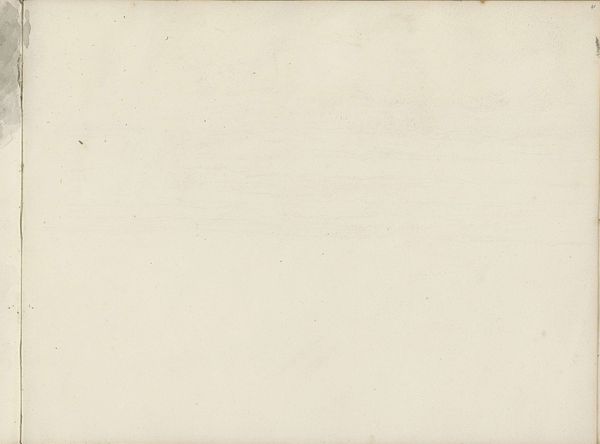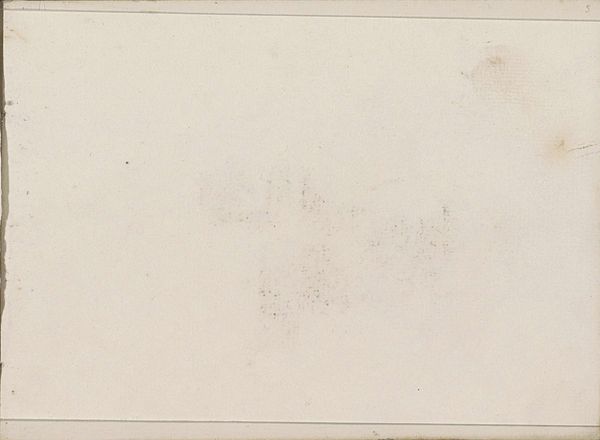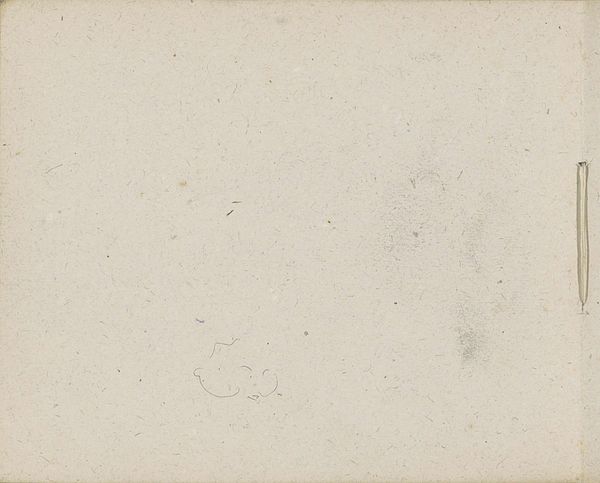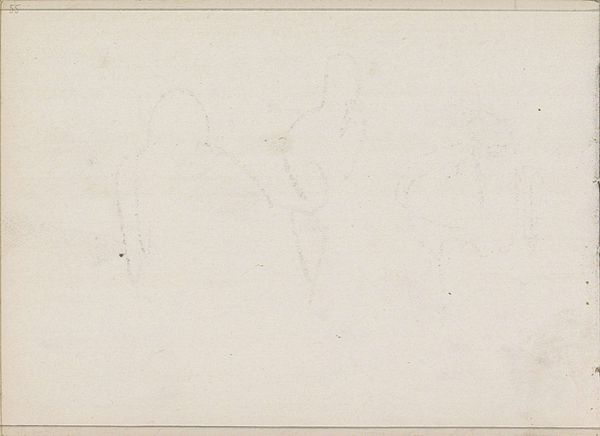
drawing, paper, pencil
#
portrait
#
drawing
#
baroque
#
paper
#
pencil
#
watercolor
Copyright: Rijks Museum: Open Domain
This is a sheet of paper made by Abraham de Haen the Younger in the first half of the 18th century. Look closely, and you might see the traces of old marks, faint lines, and discolorations accumulated over time. These imperfections become, in a sense, symbols of temporality. Consider the way artists throughout history have used the blank canvas or surface as a space for potential, a tabula rasa onto which ideas and images are projected. Think of the ancient cave paintings where artists worked on rough stone walls, or the illuminated manuscripts where scribes would carefully prepare parchment. These initial surfaces influenced the final image, as the marks and imperfections add layers of history and subconscious meaning to the artwork. The very act of marking – whether through drawing, writing, or painting – is a powerful gesture of asserting human presence against the vastness of time. This sheet embodies a psychological interplay between the desire for permanence and the relentless march of time. The blankness invites us to reflect on the fleeting nature of existence, and how time shapes our collective memories. The palimpsest nature of the surface invites us to contemplate how symbols are layered and reinterpreted across different eras, leaving lasting impressions on the human psyche.
Comments
No comments
Be the first to comment and join the conversation on the ultimate creative platform.
